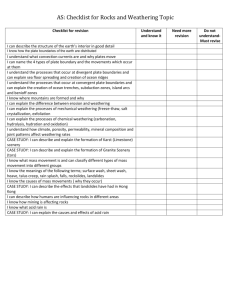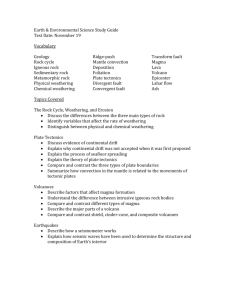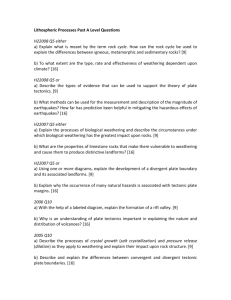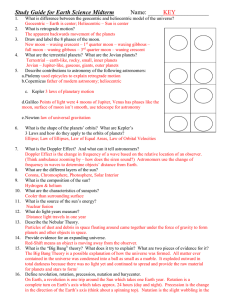Old Quiz 12 Q&A
advertisement
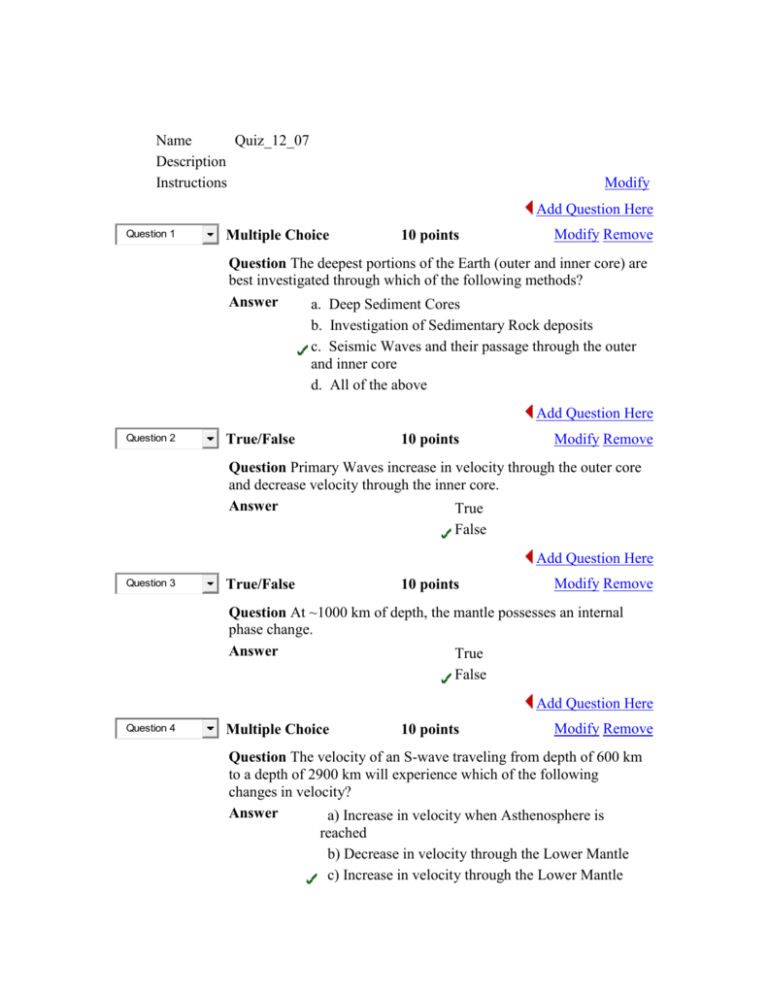
Name Quiz_12_07 Description Instructions Modify Add Question Here Question 1 Multiple Choice 10 points Modify Remove Question The deepest portions of the Earth (outer and inner core) are best investigated through which of the following methods? Answer a. Deep Sediment Cores b. Investigation of Sedimentary Rock deposits c. Seismic Waves and their passage through the outer and inner core d. All of the above Add Question Here Question 2 True/False 10 points Modify Remove Question Primary Waves increase in velocity through the outer core and decrease velocity through the inner core. Answer True False Add Question Here Question 3 True/False 10 points Modify Remove Question At ~1000 km of depth, the mantle possesses an internal phase change. Answer True False Add Question Here Question 4 Multiple Choice 10 points Modify Remove Question The velocity of an S-wave traveling from depth of 600 km to a depth of 2900 km will experience which of the following changes in velocity? Answer a) Increase in velocity when Asthenosphere is reached b) Decrease in velocity through the Lower Mantle c) Increase in velocity through the Lower Mantle d) All of the above Add Question Here Question 5 True/False 10 points Modify Remove Question The Earth’s core ranges in temperature from 10,000 to 16,000 degrees Celsius. Answer True False Add Question Here Question 6 Multiple Choice 10 points Modify Remove Question The region of faster S-Wave speeds in the lower mantle underneath the North American Plate indicates which of the following? Answer a) There are very young, buoyant, and relatively warm rocks located underneath the North American Plate b) There is a new hot spot developing underneath the North American Plate whose effects have not reached ground level in the present day. c) There are very old, relatively cold rocks located underneath the North American Plate Plate d) This region in the remnant of an very old hot spot that once effected the entire North American Add Question Here Question 7 True/False 10 points Modify Remove Question The Earth’s magnetic field undergoes reversals through time allowing for the dating of sediments that record the changes in the Earth’s magnetic field. Answer True False Add Question Here Question 8 True/False 10 points Modify Remove Question Halite has a slower rate of weathering, in comparison to Biotite mica. Answer True False Add Question Here Question 9 Multiple Choice 10 points Modify Remove Question Which of the following statements is true? Answer a) When a Large rock breaks into more abundant smaller rocks the rate of chemical weathering increases b) When a Large rock breaks into more abundant smaller rocks the rate of chemical weathering decreases c) If a minerals solubility in water is very low it will have a very fast weathering rate d) Cold temperatures and high amounts of rainfall promote the fastest rates of chemical weathering Add Question Here Question 10 Multiple Choice 10 points Modify Remove Question The composition and internal structure of a parent rocks affects weathering rates because_____________. Answer a) All minerals weather at the same rate b) a parent rock’s structure affects its susceptibility to cracking and fragmentation c) Both A and B d) None of the above Add Question Here
